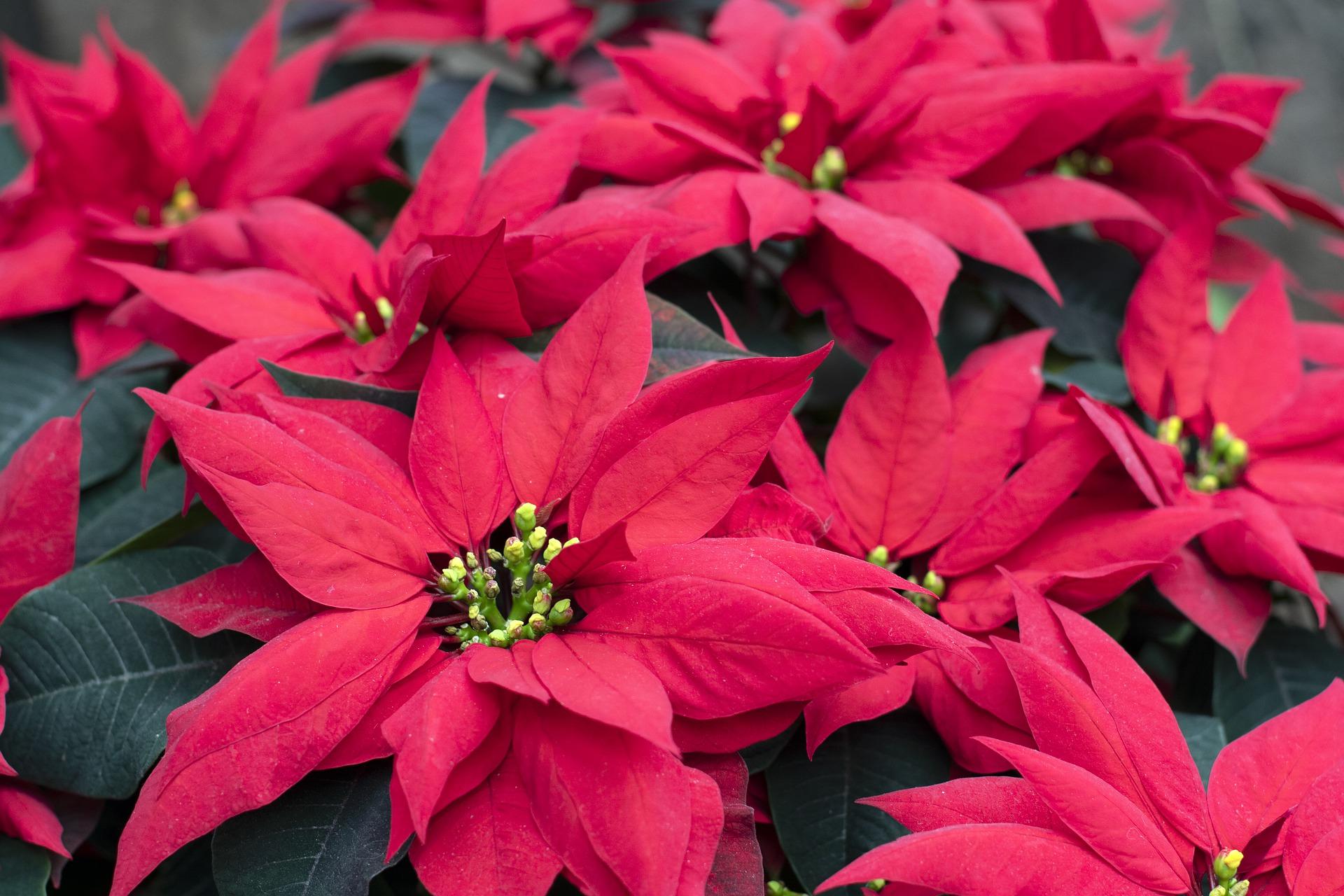About Poinsettias
-
Poinsettias are native to Mexico and belong to the Euphorbiaceae or spurge family.
-
Poinsettias add color and beauty to the interiorscape during the holiday season. You will find not only the traditional red, but also white, pink, and marbled colors. White poinsettias sometimes are dyed with other colors such as blue or orange.
-
New hybrid introductions are made every year. Hybrid varieties of poinsettias make it possible for them to last longer indoors than ever before.
-
The showy colored parts of poinsettias are not flowers but are colored bracts or modified leaves. The flowers (cyathia) are yellow and are located in the center of the bracts.
- Indoors, proper care helps poinsettias maintain their appearance and increases their longevity.
How to care for Poinsettias
- Place your Poinsettia in an area with bright natural light from the south, east, or west, but avoid direct sunlight.
- Keep away from cold, drafty windows and drying heat sources. Poinsettias prefer daytime room temperatures between 60⁰ and 70⁰ F and in the mid-fifties overnight.
- Do not place plants in areas prone to drafts such as near heat vents, fireplaces, doors, or windows because leaf and flower drop may occur. Never place poinsettias near a cold window.
- Water only when the soil feels dry to the touch. Water thoroughly so that roots at the bottom of the pot will be moist. Allow the water to drain freely from the bottom of the container but do not let your plant sit in a water-filled saucer.
- Remove or poke holes in the decorative foil or plastic on the bottom of the container to ensure that excess water will drain out. Good drainage is essential! Too much water can drown roots.
-
Fertilizing is not necessary during bloom time. Begin to fertilize using a balanced houseplant fertilizer in late winter until late summer, if you keep your plant past the holiday season.
